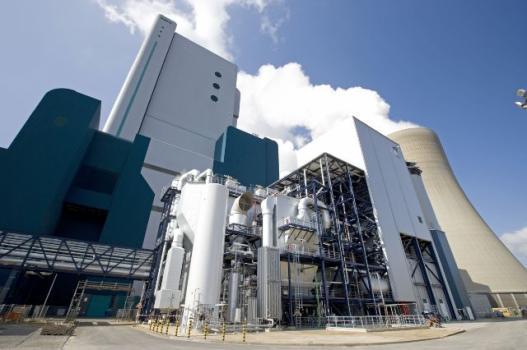Since 2009 RWE, Linde and BASF have been testing a new technology for separating carbon dioxide (CO2) from flue gas in a pilot plant at RWE’s Niederaussem power station near Cologne. The results of the practical test are now available: Compared to processes commonly run today, the innovative technology that captures CO2 by means of new chemical solvents can reduce energy input by about 20 percent. The new solvents also feature clearly superior oxygen stability, which reduces solvent consumption significantly.
“We are pleased with this breakthrough, which we have achieved by cooperating closely with BASF and Linde. By enhancing efficiency and accordingly reducing costs, we have created a critical success factor for carbon capture technology, which in our view is key to climate-compatible power generation from coal,” underlines Dr. Johannes Heithoff, Vice President, Research and Development, RWE Power. “The practical tests met all of the expectations we had after lab-testing the new solvent. This paves the way for scaling up the process to large power plants,” says Dr. Andreas Northemann, Business Manager, Global Gas Treatment, BASF Intermediates division. “We are very satisfied with the results of the practical tests, too,” says Dr. Aldo Belloni, Member of the Executive Board of Linde AG. “Further development of CO2 capture technology for treating power plant waste gases is among the focal points of our activities aimed at clean energy generation.”
The three companies started up the pilot plant in August 2009; it is part of the Coal Innovation Center of RWE Power. BASF is testing the newly developed carbon capture process based on improved solvents in the course of this cooperation announced in 2007. Linde was responsible for pilot plant engineering and construction.
Now the partners are working on solutions for demonstration and large-scale power plants. First demonstration plants are scheduled to come on stream in 2015, and CO2 capture is expected to be used commercially in coal-fired power stations by 2020. This technology should allow more than 90 percent of the carbon dioxide contained in the waste gas of a power plant to be captured for subsequent sub-surface storage or for chemical transformation, for example to give fertilizers.
RWE Power will spend about nine million euros on the development project described above. The German Federal Ministry of Economics and Technology contributed about four million euros to the cost of the pilot plant.
Share:









